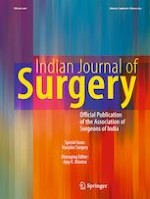18-09-2021 | Varicosis | Original Article
Surgery for Varicose Veins
Published in: Indian Journal of Surgery | Special Issue 1/2023
Login to get accessAbstract
Numerous surgical techniques are available to treat patients presenting with varicose veins. A balance is sought between advantages and disadvantages of the available techniques to render them suitable for the treatment of varicose veins depending on the patient’s clinical profile. The abolition of axial venous reflux to reduce ambulatory venous hypertension is the critical factor for successful treatment of varicose veins. Surgical ablation in the form of high ligation of sapheno-femoral junction and stripping of great saphenous vein is more than a century old surgical procedure that is still considered the gold standard in surgery. Various surgical techniques have evolved including elaborate open methods with extensive groin and thigh incisions, sub-fascial ligation of perforators using leg long incisions, endoscopic approach, and the recently developed techniques. The modern surgical approaches are minimally invasive, cosmetically appealing, use local anesthesia, and are performed under the guidance of ultrasonography. These surgeries can often be done as office procedures and demonstrate long-term results and similar hemodynamics in comparison to that of traditional open surgical methods. Although endovenous ablative therapies are preferred by both patients and physicians due to potential advantages such as less pain, short duration of hospital stay, faster recovery, technical ease, and short procedure time, the open surgical techniques still have an essential role and definitive indications in the modern clinical settings.





